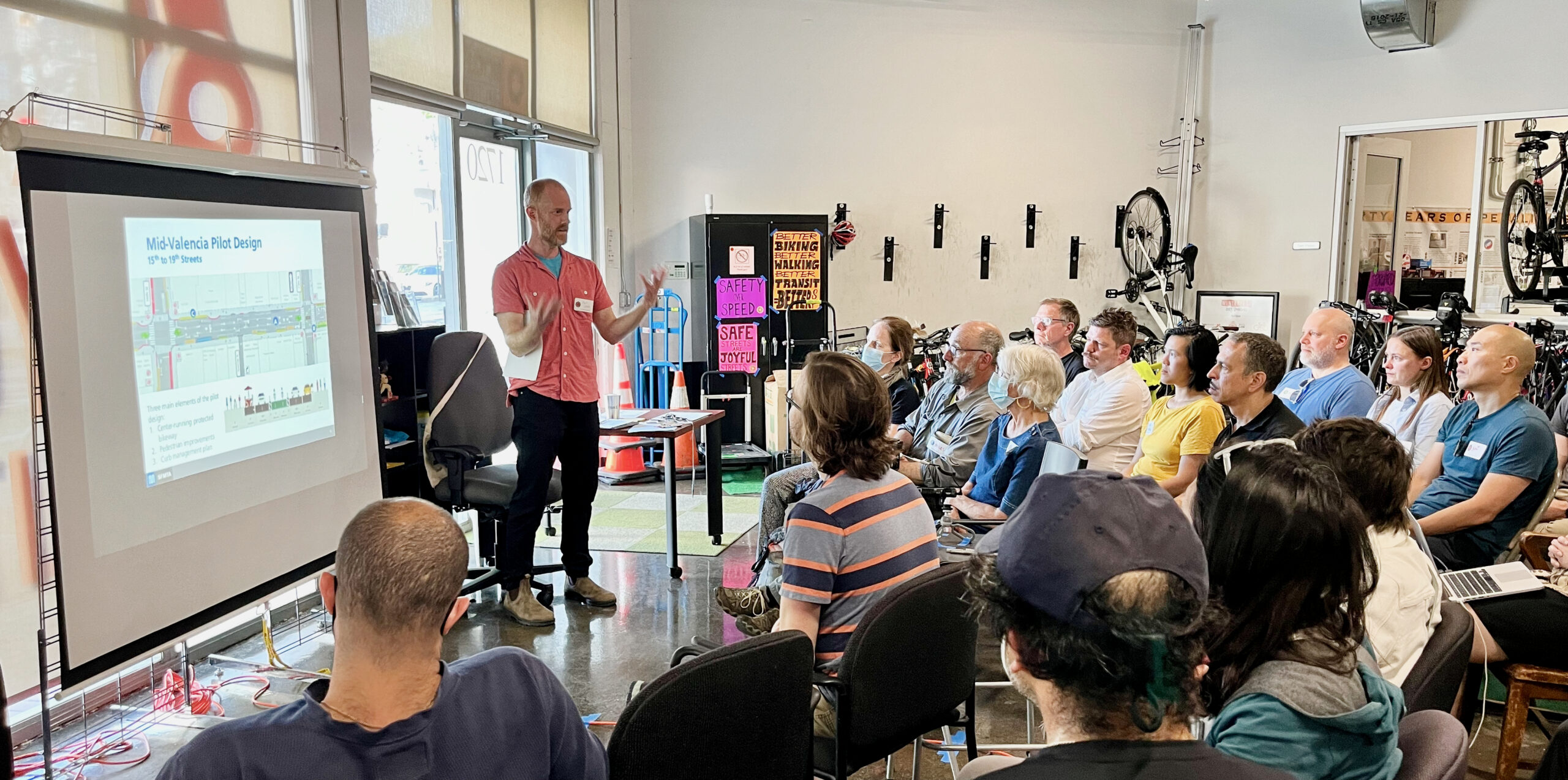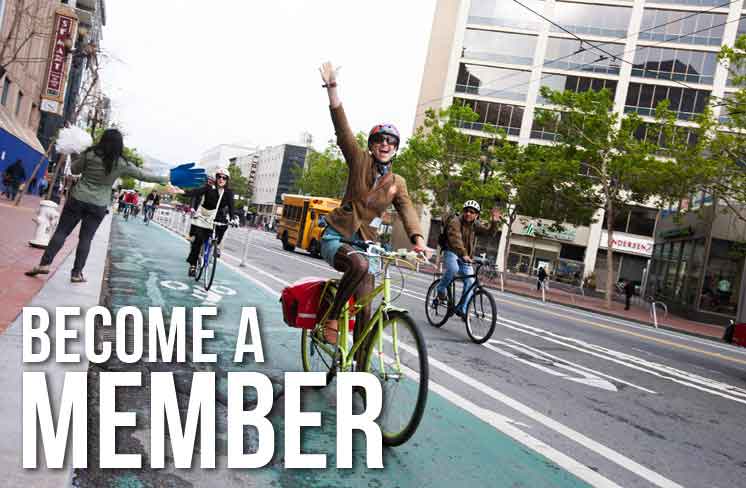On June 18th, the SF Municipal Transportation Agency’s (SFMTA) Board of Directors will vote on whether to endorse a conceptual design for parking protected side-running bike lanes on Valencia Street between 15th and 23rd Street.
This presentation and vote comes nine months after the start of the center-running bike lane pilot, and is fully aligned with our organizational stance from February to pivot to a protected side-running bike lane once the pilot is over, if safety improvements aren’t made for the center pilot design.

To prepare for the June 18th hearing, we’ve been consulting with members and stakeholders. Last week, we hosted an in-person member meeting with nearly 50 attendees and we sent a member survey to the roughly 600 members who have expressed interest in the Valencia pilot. We also sat down with the Valencia Corridors Merchant Association (VCMA) to address business concerns about the conceptual design.
From the member meeting and followup survey last Tuesday, we learned that 60% of attendees and respondents are generally very supportive of a parking protected side-running bike lane because of its predictability, along with the ability to safely stop midblock to visit businesses and easily turn onto cross streets.
For members, the top three concerns about the conceptual design include:
- Unpredictable interactions with pedestrians crossing the bike lane to get to floating parklets and liability in the event of a collision between people on foot (pedestrians, parklet customers or staff) and people on bikes
- People in cars using daylighting zones as temporary parking spaces
- Double-parking in the bike lane and buffer spaces around parklets
In addition, we heard strong support for the center-running bike lane from some members. This is a trend we see in the results from both of our Valencia Member Survey conducted in February, in which a center-running bike lane ranked second to a protected side-running bike lane with curbside parklets, and our most recent survey where 32% of survey respondents prefer the center-running bike lane.
The broader biking community is not a monolith, and neither are our members. We know many members who feel safe in the center-running bike lane and think that with more durable materials, strict enforcement of turn restrictions, and continuity along the entire corridor, this design could be a successful one. But there are safety issues with the center-running lane that have not improved in the pilot period, like the difficulty of turning from the center, and the inconsistency in bike lane design along the whole corridor. Safety is our top priority. While the center-running lane is an improvement on the previous unprotected lanes, unresolved safety issues persist that would be improved by pivoting to a traditional and familiar design on Valencia Street.
On Thursday, we met with members of the Valencia Corridor Merchant Association (VCMA) to discuss the proposed conceptual design. They expressed their top three priorities in changing the design, starting with the highest: improving traffic circulation on and around the corridor, the parking experience for people visiting the corridor, and the merchant loading experience. At this time, both the SF Bicycle Coalition and VCMA generally support the conceptual design. As we move toward a more detailed design from the SFMTA, we will look to our members and collaborate with other stakeholders to provide input on the fine-grained details, such as safe turning, consistent paint treatments, and signal phasing.
The SF Bicycle Coalition supports the proposed conceptual design under these conditions:
- Consistent curbside parklet arrangement, rather than a mix of curbside and floating parklets
- The longest permitted leading pedestrian interval of seven seconds, to give cyclists and pedestrians time to cross before people driving
- Installing street signage clarifying that bicyclists may proceed with pedestrian walk signal
We plan to attend on June 18 to present our stance to the MTA Board of Directors, and are drafting talking points for our members to give public comment as well – join our campaign now in order to get talking points and meeting reminders from us before then.


